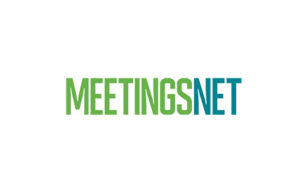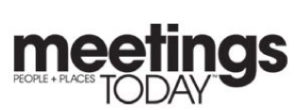If you are starting a meetings and events risk management program from scratch, need to revamp an outdated crisis management plan or to develop an enterprise-wide meeting and event risk management strategy, take a page from travel risk management.
Duty of care principles are well settled in travel management. Companies must have travel policies in place to protect traveler safety and not send them into harm’s way. Similarly, companies organizing meetings and events have a duty of care to put attendee safety first and take reasonable steps to ensure the right people are in the right places to provide fast and seamless responses when a meeting is threatened by a crisis or disruption.
[Related: A Risk Management Checklist to Help Avoid Disaster]
The downsides for not having both a travel safety program and meeting risk management strategy are:
- Threat to the safety and well-being of business travelers and meeting attendees.
- Financial liability.
- Legal liability.
- Reputation damage.
Best Practices of Travel Risk Management
- Know the stakeholders and the travel policy’s current state of preparedness: Travel and meeting management share many of the same stakeholders and both require C-suite endorsement. Making the business case for executive support requires being able to demonstrate how prepared the travel and meeting management teams really are to handle a crisis.
- Analyze travel risk: Pandemics, political and civil unrest, active shooters and terrorism may drive the majority of travel risk mitigation, but most travel threats are disruptions like weather, medical and vendor performance issues. What we worry about and plan for may statistically be unlikely, but by assessing and preparing for the major catastrophes, travel managers are prepared for the lesser, more common incidents.
- Plan for trip risk mitigation: Prior to the trip, the travel manager must determine the likely threats and make plans to eliminate, control and/or minimize them.
- Integrate trip risk monitoring: Travel managers identify threats and potential threats before the trip, during the trip and post trip. The business traveler must have access to safety information and updates from beginning to end.
- Create crisis communication channels: Quality data on travelers’ whereabouts comes from having tools and utilizing social media channels to share their locations and their willingness to use them. The most critical piece of data is access to the traveler’s itinerary.
- Rehearse, track and improve: A best-in-class travel risk program includes practice exercises to rehearse crisis responses. All programs should require documentation and debrief after a disruption or crisis with recommendations to senior management on how to improve.
When meeting managers consider these best practices of travel risk management, it is easy to see the parallel stages for managing meeting disruptions and crises.
Critical Elements of Meeting and Event Risk Management:
- Assess how prepared the company and its planners are to handle a crisis: Do you have clear roles and responsibilities? Updated response plans? Conduct crisis simulations to gauge fear and panic. Do you have executive support?
- Design a vulnerability tool to analyze the risk and threats of the meeting/destination: Identify foreseeable risks based on the location and type of event, weather patterns, known threats or criminal activities, likelihood of civil unrest or hecklers, controversial topics or participants.
- Involve the hotel, suppliers and first responders from pre-event safety planning through onsite rehearsals: Add safety and security clauses in all contracts requiring sharing of non-confidential, updated emergency protocol.
- Use the emergency procedures from responder networks and build crisis response plans: Train your team on what to do in the first five minutes: Who to contact, how to contact and how to manage until help comes. Rehearse each potential crisis with your team before the event.
- Plan for alternative crisis outcomes: Know the circumstances for canceling the event, delaying the event or reducing the size and moving forward. Understand the financial consequences of each alternative before the event.
- Implement a crisis communication plan via social media channels: Who will send messaging in a crisis? Identify channels of communication and a hub. Have a single channel for attendees for two-way check in. Keep your emergency contact list secure but handy.
- Document, debrief and recommend: Include risk management as a part of your strategic meeting process. Document all disruptions and incidents. Include all elements in your meeting design notebook and make risk management a part of your event after-action review.
Companies interested in creating a holistic meeting risk management strategy have an ideal model already in place from established travel risk management programs.
Organizations will inevitably face crises, so they must prepare for the unexpected and know when and how to respond under pressure. By implementing integrated travel and meeting risk management, both teams will know how to plan proactively, how to determine the impact of a crisis and how to respond appropriately.
ADDITIONAL RESOURCE:
The Meeting & Event Risk Management Guide
[Exclusive to the SAFE LLC]





